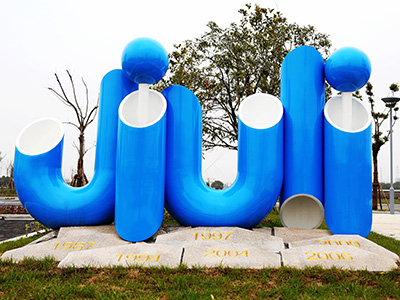Nickel prices have been rising recently, affecting the price of stainless steel fluctuations. But what effect does nickel have on stainless steel?
Nickel is the second most important alloying element in stainless steel after chromium (more on that later). In order to resist the corrosion of reducing acid and alkali media, it is not sufficient to contain chromium in steel; nickel must be added to chromium (see Figs. 1 and 2). Nickel can promote the stability of passivation film and improve the thermodynamic stability of stainless steel. Therefore, the coexistence of chromium and nickel in stainless steel can significantly enhance the stainless steel rust and corrosion resistance. Nickel is beneficial to the high temperature oxidation resistance of stainless steel, but harmful to the high temperature vulcanization resistance. Because nickel reacts with sulfur to form low melting point sulfide. However, the formation of low melting point sulfide will significantly reduce the thermal processability of steel.

Figure 1. Effect of chromium and nickel in steel on resistance to dilute sulfuric acid (10% H2SO4 at room temperature)

Figure 2. Corrosion resistance of chromium-nickel stainless steels with different chromium and nickel contents in 5%H2SO4
The combination of nickel and chromium can significantly improve the corrosion resistance of austenitic stainless steels in caustic media (e.g., NaOH) (Fig. 3). Nickel also improves the resistance of 18-8 stainless steels to chloride stress corrosion (Fig. 4). Although nickel does not play a role in the Pre value (Cr+3.3Mo+16N, the higher the value, the better the pitting and crevit-corrosion resistance), nickel is beneficial in general purpose Cr-Ni austenitic stainless steels with low chromium and molybdenum (see Fig. 5).

Fig. 3. Effect of 43K mercury method and membrane method on the corrosion resistance of stainless steel in 48%NaOH solution

Fig. 4. Influence of nickel on chloride stress corrosion resistance of 18%Cr-Ni steel

Fig. 5. Effect of nickel on crevice corrosion resistance of chromium-nickel austenitic stainless steel
Nickel can significantly improve the plastic, toughness of stainless steel, can make the brittle transition temperature of some stainless steel brittleness temperature down.
Nickel can improve the cold formability and weldability of some stainless steels and reduce the tendency of cold work hardening of austenitic stainless steels.
Nickel can significantly affect some of the susceptibility of stainless steel to the precipitation of intermetallic compounds such as σ and χ(Fig. 6), thus preventing and reducing their harmful effects.
Fig. 6. Effect of nickel on σ phase precipitation in 00Cr25Ni25Si2V2Nb steel
With the increase of nickel content in austenitic stainless steel, the solubility of carbon in steel decreases, leading to the increase of intergranular corrosion sensitivity of steel, so the carbon content in high nickel austenitic stainless steel is less than 0.02% (from Introduction to Stainless Steel)


















